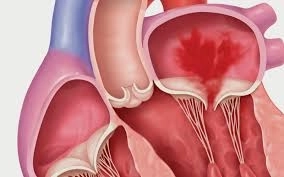
When Do We Opt for Aortic Surgery? – With Dr. Ahmed Fahmy El-Weteidy
Published on: 2025-07-01 | Written by: Dr. Ahmed Fahmy Al-Wateedi, Head of Adult Cardiac Surgery, Prince Sultan Center
A thoracic aortic aneurysm (TAA) is a serious condition that can silently progress and lead to life-threatening complications such as rupture or dissection. According to Prof. Dr. Ahmed Fahmy El-Weteidy, Senior Consultant of Cardiac Surgery and Fellow of the Royal College of Surgeons in England, the right timing for surgical intervention is crucial to saving the patient’s life and preventing catastrophic outcomes.
In this article, we explore the causes of thoracic aortic aneurysms, how they are diagnosed, and when surgery becomes essential.
What Is a Thoracic Aortic Aneurysm?
The aorta is the largest artery in the body, carrying oxygen-rich blood from the heart to the rest of the body. When the wall of the aorta weakens, it can begin to bulge or dilate abnormally, especially in the chest region (thoracic aorta).
Prof. Dr. Ahmed Fahmy El-Weteidy explains that in early stages, TAAs may not show any symptoms but can lead to:
-
Sudden rupture of the aorta
-
Aortic dissection (a tear in the aortic wall)
-
Pressure on surrounding organs such as the lungs, airways, or heart
How Is It Diagnosed?
TAAs are often discovered incidentally during imaging for unrelated issues. Symptoms, if present, may include:
-
Persistent chest or upper back pain
-
Shortness of breath
-
Hoarseness or difficulty swallowing (if the aneurysm presses on nerves or the esophagus)
Prof. Dr. Ahmed Fahmy El-Weteidy emphasizes the importance of imaging studies such as contrast-enhanced CT scans or MRI to accurately determine the size and location of the aneurysm.
When Is Surgery Necessary?
According to Prof. Dr. Ahmed Fahmy El-Weteidy, surgery is typically recommended when:
-
The aneurysm’s diameter exceeds 5.5 cm
-
There’s a rapid increase in size (more than 0.5 cm per year)
-
There is a family history of aortic rupture
-
The patient has genetic disorders like Marfan syndrome
Early intervention—before rupture or dissection—yields better outcomes and reduces risk.
Surgical Options
There are two main approaches to treating TAAs, as explained by Prof. Dr. Ahmed Fahmy El-Weteidy:
-
Open Surgery: Involves replacing the dilated portion of the aorta with a synthetic graft. Suitable for otherwise healthy patients.
-
Endovascular Repair (TEVAR): A less invasive option using a stent graft delivered through the femoral artery, ideal for high-risk patients or those unsuitable for open surgery.
Conclusion
Thoracic aortic aneurysms may progress silently, but early diagnosis and timely intervention are critical. Prof. Dr. Ahmed Fahmy El-Weteidy highlights that regular monitoring and personalized treatment decisions are essential to prevent life-threatening complications and ensure long-term success.

